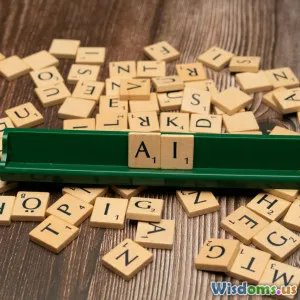
Tech Innovations in Language Education
7 min read Explore groundbreaking technology reshaping language education, making learning more immersive, personalized, and effective. (0 Reviews)
Tech Innovations in Language Education
The way we learn new languages has been transformed dramatically over the past decade. What once was a tedious process of memorizing vocabulary and laboriously practicing grammar rules has evolved into an engaging, technologically enhanced journey. Today, tech innovations—from artificial intelligence (AI) to virtual reality (VR)—are reshaping the language education landscape, making learning faster, more immersive, and truly personalized. This article takes you through the most remarkable trends and tools revolutionizing language acquisition.
The Rise of AI-powered Language Learning
Artificial intelligence lies at the heart of many modern language learning platforms. AI enables adaptive learning experiences tailored to individual strengths, weaknesses, and learning styles. Platforms like Duolingo use AI algorithms that analyze users' responses and dynamically adjust the difficulty of exercises. This personalization boosts retention by ensuring learners receive material at the optimal challenge level.
AI-driven chatbots and conversational agents are another breakthrough, simulating natural conversations without fear of judgment—a common barrier for language learners. For instance, Google's Meena chatbot employs AI to maintain fluent dialogue on a variety of topics, providing learners with practical speaking practice anytime, anywhere.
Furthermore, machine learning aids automated speech recognition. Platforms like Rosetta Stone feature sophisticated pronunciation analysis, giving instant feedback on learners' accent and intonation by comparing it to native speakers. This precision accelerates oral language mastery, often considered the hardest skill to develop.
Virtual and Augmented Reality: Immersive Language Environments
Virtual Reality (VR) and Augmented Reality (AR) technologies elevate language education by immersing users in simulated environments that mimic real-world situations.
Imagine walking through a bustling Parisian market in VR, negotiating prices in French or exploring Tokyo's subway system while practicing Japanese. Companies like Mondly VR offer these immersion experiences, enabling context-based learning that maximizes both vocabulary acquisition and cultural understanding.
AR also enhances physical study materials. Apps like Google Lens can scan text instantly and provide instant translations or grammar explanations layered directly onto the original text. This intersection of physical and digital interaction enhances vocabulary learning and comprehension.
This immersive dimension facilitates experiential learning, a method that neuroscientific research shows greatly improves memory retention and language fluency, far beyond traditional textbook approaches.
Gamification: Making Language Learning Fun and Engaging
Capturing learners’ attention and motivation is crucial—no matter the age or background. Gamification—the use of game mechanics in non-game contexts—has become a powerful tool for language acquisition.
Popular platforms such as Memrise, Busuu, and LingQ incorporate points, badges, leaderboards, and timed challenges to encourage regular practice and make learning enjoyable. Memrise, for example, integrates user-generated mnemonics and spaced repetition, reinforcing vocabulary memorization through playful techniques.
This engaging approach tackles the dropout rates associated with traditional language courses by providing learners with tangible short-term goals that consistently reward their effort.
Mobile and Cloud: Language Learning on the Go
With smartphones virtually omnipresent, mobile apps have democratized language learning access globally.
Apps like Babbel and HelloTalk allow learners to practice daily for short bursts, making language study adaptable to busy lifestyles. HelloTalk offers direct interaction with native speakers via text, audio, and video messages, facilitating cultural exchange and practical communication.
Moreover, cloud computing ensures learners’ progress, preferences, and achievements sync seamlessly across devices—be it a phone, tablet, or laptop. This flexibility means you can practice Spanish grammar during a quick subway ride, then review pronunciation exercises later at home—with zero data loss.
Real-World Impact and Future Horizons
These technological innovations don’t just make language learning easier; they open new avenues. For refugees and migrants adapting to new countries, AI-enabled translation services and language learning apps provide critical integration support rapidly and affordably.
In education, schools increasingly adopt blended curriculums blending classroom instruction with AI platforms. UNESCO reports that such integration leads to higher learner engagement and improved language test scores.
Going forward, experts predict further leaps including:
- AI tutors with emotional intelligence capable of recognizing learner frustration and adjusting teaching style.
- Wearable devices enabling real-time translation and language games.
- Enhanced multilingual VR social platforms connecting learners worldwide for authentic conversations.
These tools promise not only to break language barriers but to encourage global cultural empathy in unprecedented ways.
Conclusion
The fusion of technology and language education heralds a new era of learning. By leveraging AI personalization, immersive VR environments, gamified interaction, and seamless mobile accessibility, today's technology equips learners to master languages efficiently, engagingly, and meaningfully. As these innovations continue to evolve, anyone—from casual learners to language professionals—stands to benefit from a smarter, more connected, and culturally rich acquisition experience. Embracing these tools today sets the foundation for linguistic and global fluency tomorrow.
Whether you’re attempting your first foreign language or refining advanced proficiency, tech advancements are making the journey more inspiring and effective than ever before.
“Technology justifies the urge to learn. Through digitally enhanced pathways, language education becomes limitless and borderless.” — Linguistics Expert Dr. C. Morales
Rate the Post
User Reviews
Popular Posts




















